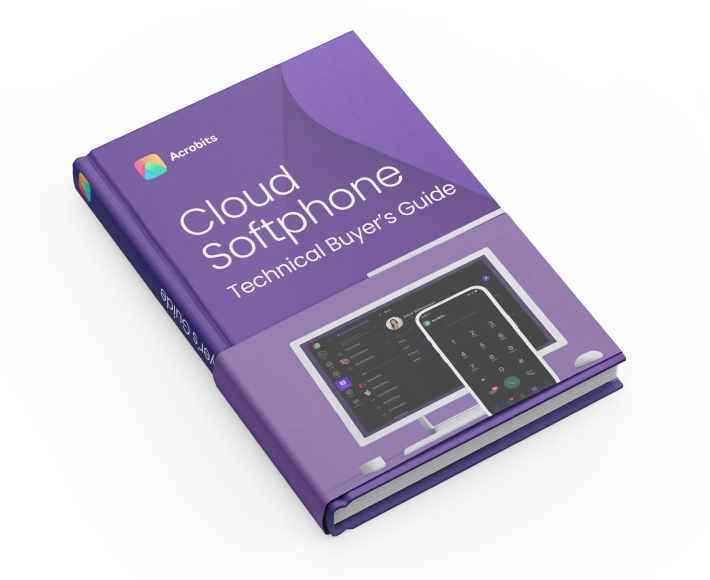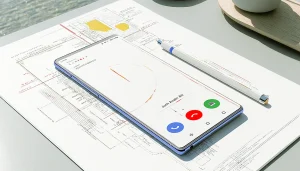
A company’s leadership plays a critical role in directing strategy and growth. When it comes to a technology-focused company like Acrobits, the Chief Technology Officer (CTO) guides our product development and is vital in our overall success.
We recently sat down with our CTO, Tomas Vyskocil, to learn more about him and how he plans to lead the technological growth of Acrobits.
Read on to learn more about Tomas, his vision for Acrobits, and for a sneak peek into our roadmap.
I was always fascinated with technology, even more so if it was something portable. Handheld consoles, pocket PCs, mobile phones — anything portable.
At some point I realized I wanted to do something on my own, so I started programming. I did my first experiments in Java and C about 15 years ago, back when I was in high school. Even as sports started taking up more of my time in high school, I always stayed in touch with the tech world and programming.
At some point, I decided which university to pick, making the decision to attend a technical university. This was also the moment I started looking into Android development. I graduated a few years later, and I was ready to start a career. I found a job at a startup hub, but I was not fulfilled and started looking for something new.

Well, I ran into an ad for Acrobits. One of my schoolmates worked at Acrobits, which helped me trust the company. I went in for an interview, and I was impressed by how things work at Acrobits. So I started as a junior Android developer and got the senior developer position a few years later.
After the passing of Jiří Král, Acrobits’ long-standing and well-respected CEO, change was inevitable. We went from an era of following his lead to a new era where I was the CTO of the company.
There are two general ways to create a roadmap: you can try to stay ahead and offer customers features they probably don’t know they need yet, and you are convinced that they will benefit from them. Or you can ask them what they need.
We do both.
We stay aware of market trends, what our competitors are offering, and any events that will impact our industry, like COVID-19 or OS updates. Still, even if we would like to release everything on time or even release it at all, we often have to postpone or shift priorities. I mean, who would have thought that video conferencing would take off as it did without the pandemic?
Additionally, every customer has access to our support portal, where they can find help and submit requests. Our developers and I frequently monitor the board to see what our customers want.
In 2020, we started doing customer surveys. We discovered that the features our customers were requesting were already slated for development. It was great feedback and let us know we’re headed in the right direction.
So, we take everything and determine its priority, how long it will take, and then build our roadmap.
Sinch is certainly a much larger company in terms of employees. However, Acrobits remains independent and continues to guide its own development decisions.
Sinch can see our proven success in this industry. They are confident in our abilities to stay innovative and create forward-thinking solutions.
Now, that doesn’t mean we want to become siloed from Sinch. We see a lot of value in the robust product catalog Sinch has created. In fact, many of its products could potentially enhance Acrobits’ services. Sinch has additional expertise and experience that will undoubtedly benefit us both.
We are not just part of Sinch now, we are powered by Sinch.
What I can say is simple. I see nothing but opportunity coming from this partnership for our customers.
We always strive to be proactive by listening to our customers and looking at dominant trends. When COVID-19 changed the world, we immediately asked a simple question: are we capable of developing a video conferencing solution?
Acrobits had already created other communications applications like Cloud Softphone. So, we knew we could do it. But we needed to know if we could make a video conferencing solution that was intuitive, feature-rich, and compatible with our team. That meant analyzing our limitations, things like developer availability, scarcity of time, and other resources. LinkUp was the direct result of this process and we’ve already deployed it to some of our VIPs and the feedback is very positive.
We built our LinkUp conferencing using Amazon Chime’s platform. We chose that platform for its maturity and the powerful functionality it offers. Its native SDKs give us the maximum amount of control over the product and we can also rely on the robust developer support it has.
The fact that it is running on top of AWS is another benefit for us and our customers.

We have the luck to have a dedicated and skilled team of developers — backend developers, frontend developers, and developers that focus on the native platforms.
But whatever we built, we knew it needed to be intuitive and easy to use. That’s why we put a lot of development and testing time into making LinkUp user-friendly and compatible with major platforms. We also engaged our customers to see what features they wanted to see included.
What we learned can be summarized in a few points:
And today, I can proudly say we delivered on all the points.
We leveraged what we already prepared from the beginning. The founders of Acrobits, from the very beginning, managed to run Cloud Softphone on every platform. For example, when Android caught on in the early 2010s, Acrobits rapidly developed an Android product. This has always been the focus of Acrobits — making accessible apps regardless of the platform.
And even today, this is how our platform works. We always look for interoperability with all major or potentially growing platforms.
WebRTC is a very innovative technology and will keep improving over time, no doubt about it.
But sometimes you have to go against the flow and be pragmatic. What matters most to us are our own customers, and Acrobits serves telecom-enabled businesses that rely on a wide variety of SIP backends. Being able to provide maximum compatibility with the best possible performance in such heterogeneous ecosystems meant going native SIP. It is currently the only logical way forward for us.
Of course. Here is a brief breakdown of our upcoming roadmap:
Lastly, I asked our marketing team to start producing quarterly tech tips, where our team leaders can showcase and explain many of our use cases and new enhancements to better serve our customers, so they can build differentiated value-added services.

Are you interested in exploring Cloud Softphone? Watch our on-demand demo today and see the industry-leading Cloud Softphone platform in action.

TLDR Audience What to focus on Business leaders Business leaders: Treat voice like a product, not a utility. Fund verified identity, branded calling, and in-call AI that moves AHT, FCR, and answer-rate. Engineers Build SIP and WebRTC stacks with analytics APIs, fraud and identity checkpoints, and edge AI in mind. SIP + AI is one […]

Every telecom provider knows the appeal of a quick fix. Deploy a generic softphone app, get your users online, and move on. But as the market surges toward $400 billion by 2034, the cracks in this approach are becoming impossible to ignore. Scaling, branding, and innovation all hit a ceiling fast. The hidden cost of […]

Over the last three months, we’ve shipped a series of updates across our white-label iOS and Android apps. Below are the highlights focused on the features you have requested the most. New features Android 15 support 2-Way SMS for Turnkey Messaging, and integration with Bandwidth and Sinch (Android, iOS) Shared call history & visual voicemail […]

The history of VoIP is full of clever hacks. Solutions that started as stopgaps, even kludges, often ended up becoming the standard way of doing things. One of the best examples is push notifications for incoming calls on softphones. What began as a workaround has become the only accepted method on mobile platforms. And Acrobits […]